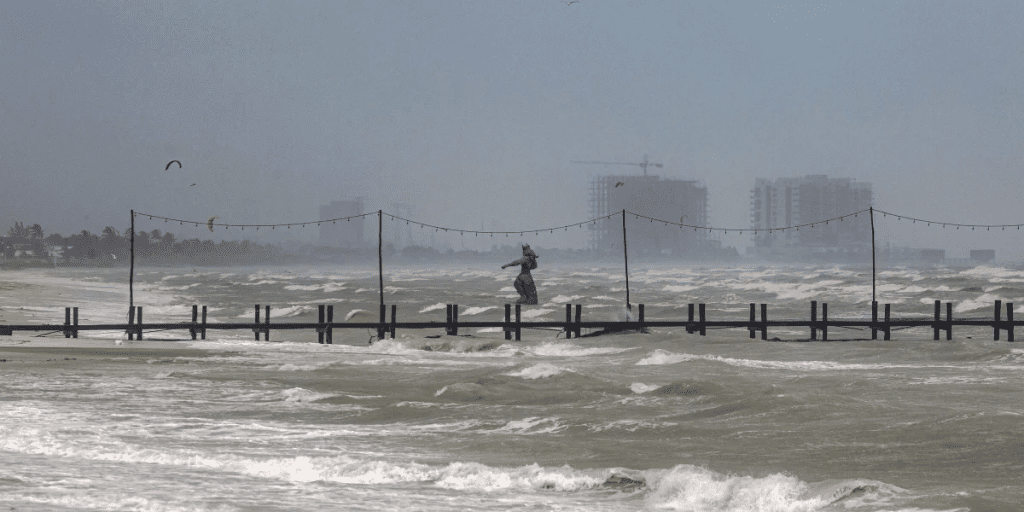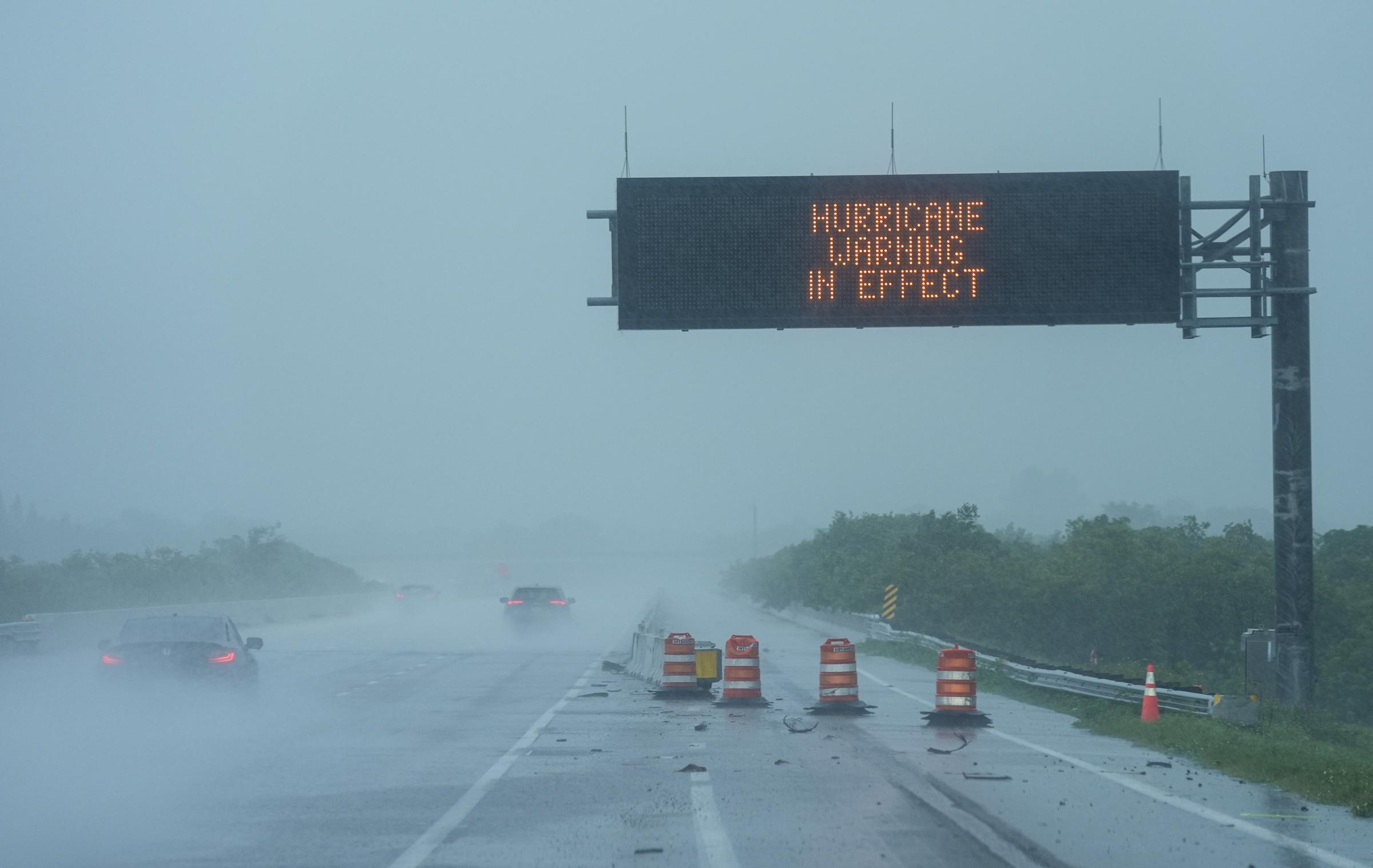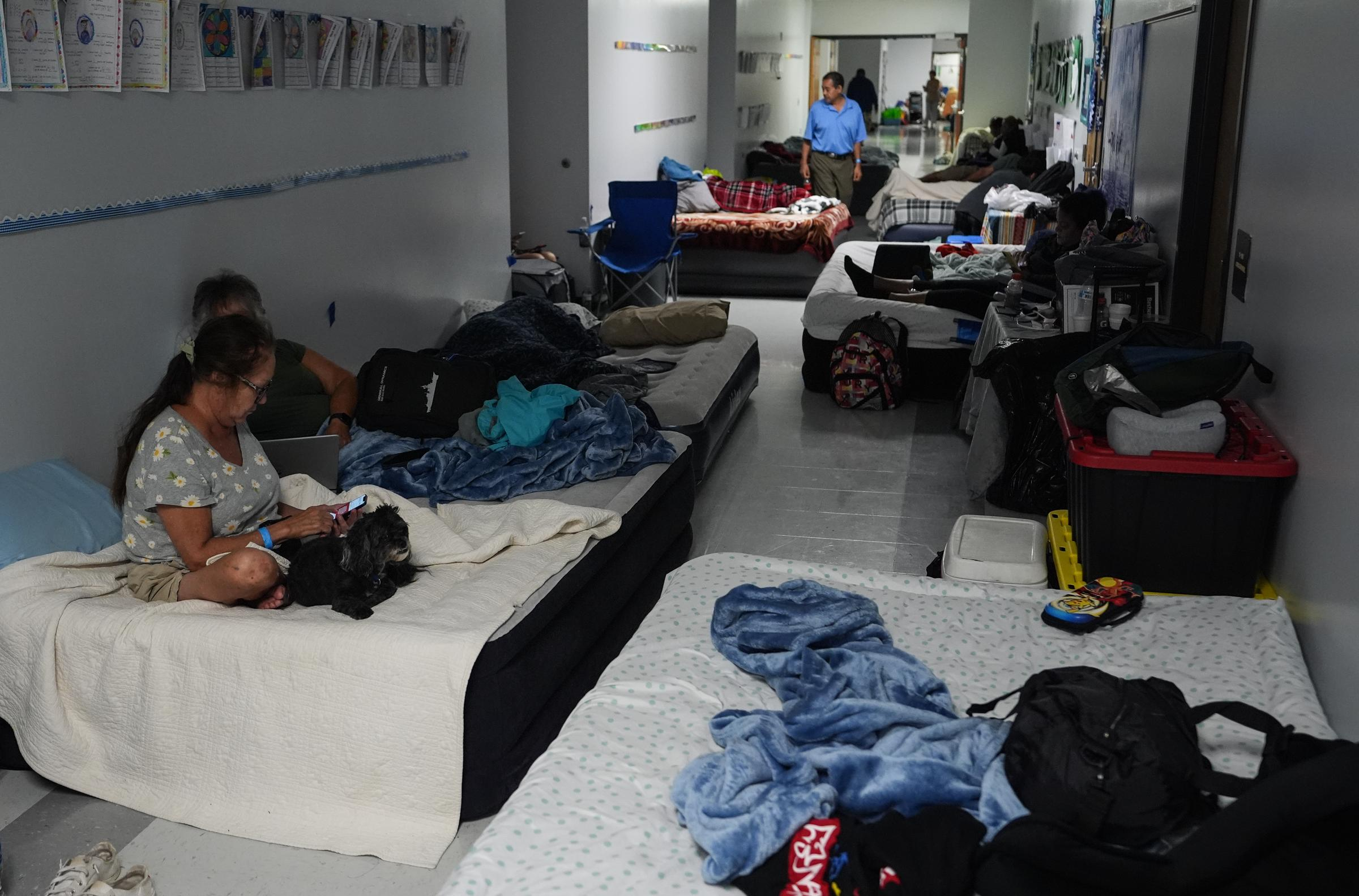As darkness descended on October 9, Hurricane Milton made its presence known, slamming into Florida’s Gulf Coast with an unforgiving ferocity. The Category 3 hurricane, packing winds of over 120 miles per hour, brought catastrophic flooding and unleashed deadly tornadoes, leaving a trail of destruction across the state. Communities were left reeling as more than a million homes and businesses plunged into darkness, with the hardest-hit areas in Sarasota, Manatee, and Hardee counties.

Hurricane Milton’s Landfall: Siesta Key Takes the Brunt
Hurricane Milton roared ashore near Siesta Key in Sarasota County around 8:30 p.m. local time, battering the coastline with relentless wind and rain. The storm rapidly intensified just before landfall, resulting in widespread destruction. Power outages affected more than 1.1 million homes and businesses, and the Florida Division of Emergency Management (FDEM) urged residents through social media to stay sheltered and vigilant, highlighting the ongoing danger even as the storm moved inland.
Tornadoes Add to the Chaos in St. Lucie County
In St. Lucie County, Hurricane Milton brought a wave of powerful tornadoes that further complicated rescue efforts. One of the hardest-hit locations was the Spanish Lakes Country Club, a senior community near Fort Pierce. Sheriff Keith Pearson confirmed “multiple fatalities” in the area, with emergency crews combing through debris, listening for signs of life. The extent of the damage is still being assessed as search and rescue teams continue their efforts, focusing on life safety.
St. Lucie County spokesperson Erick Gill shared that dozens of homes suffered significant damage, with many experiencing catastrophic destruction. County officials are working with FDEM and other state agencies to coordinate emergency response efforts.
Widespread Impact: Homes Destroyed and Lives Upturned

Across Florida, the hurricane’s powerful winds and torrential rains destroyed over 125 homes, predominantly within senior mobile home communities, according to FDEM Director Kevin Guthrie. The storm triggered 116 tornado warnings throughout the state, resulting in 19 confirmed tornado touchdowns. Governor Ron DeSantis emphasized the storm’s unprecedented impact, noting that local, state, and federal agencies are pooling resources to aid affected communities.
Emergency responders are racing against time to reach those stranded by the storm, with extensive damage reported across the Gulf Coast. In addition to downed power lines, uprooted trees, and flooded roads, the storm left entire neighborhoods unrecognizable.
St. Petersburg’s Record-Breaking Rainfall: A 1-in-1,000-Year Event
As Hurricane Milton moved inland, it brought a deluge of rain, stalling over the Tampa Bay area and delivering a 1-in-1,000-year rainfall event. St. Petersburg recorded over nine inches of rain in just three hours, far surpassing the city’s usual monthly rainfall totals. The torrential downpour caused flash flooding, submerging roads and trapping residents in their homes. The National Weather Service issued a flash flood emergency for parts of west-central Florida, warning of continued flooding risks as Milton progressed.
The Florida Division of Emergency Management has activated its emergency response protocols, with task forces dispatched to hard-hit areas. Teams are utilizing boats and other specialized equipment to navigate floodwaters, emphasizing the importance of rescuing those trapped by rising waters.
Winds Continue to Batter the East Coast: A Statewide Crisis
Though Milton began to weaken slightly as it pushed inland, strong winds continued to lash Florida’s east coast. Overnight, St. Petersburg experienced sustained winds of 48 mph, with gusts up to 79 mph. Further east, Orlando recorded gusts as high as 74 mph, while Cape Canaveral saw winds peaking at 67 mph. These powerful gusts hampered initial recovery efforts and compounded the challenges facing first responders.
Florida authorities have issued widespread advisories, urging residents to avoid non-essential travel and stay informed as the storm’s remnants continue to impact the state. Local authorities have set up emergency shelters and distribution centers, offering supplies and resources to those displaced by the hurricane.
Tornado Warnings and Flood Alerts Remain in Effect
With Hurricane Milton’s extensive impact, the National Weather Service has kept tornado warnings and flood alerts active in several counties. Officials have cautioned that additional tornadoes could still form as the storm system interacts with Florida’s warm and humid atmosphere. Governor DeSantis reiterated the need for residents to stay alert and heed official warnings as weather conditions remain volatile.
Flooded roadways and downed trees have rendered certain areas inaccessible, further complicating rescue operations. The FDEM has deployed additional task forces to assess damage and clear debris, ensuring that emergency crews can reach communities in need.
Aftermath and Recovery: Rebuilding Florida’s Gulf Coast

As Hurricane Milton moves further inland, the immediate focus remains on life safety and emergency response. With power outages affecting over a million people, utility companies are working to restore service, though some areas may remain without power for days. Local governments have requested federal aid to support recovery efforts, as officials brace for a lengthy rebuilding process.
Residents of Sarasota, Manatee, Hardee, and St. Lucie counties have returned to devastated neighborhoods, assessing the damage and salvaging what they can. For many, the path to recovery will be long and arduous, with Milton’s impact felt for months, if not years, to come.
Hurricane Milton’s Legacy: Lessons and Reflections
Hurricane Milton’s unprecedented strength and widespread destruction have underscored the need for preparedness and resilience in the face of natural disasters. Florida’s communities have shown remarkable unity and determination in responding to the storm, with countless volunteers and emergency personnel working tirelessly to support those affected. As the state begins to rebuild, the lessons from this powerful hurricane will shape future response strategies, ensuring that Florida is better equipped to weather the storms of tomorrow.
In the face of this devastating event, communities across Florida have come together, embodying the spirit of resilience that defines the state. As recovery efforts continue, the focus remains on healing, rebuilding, and preparing for the challenges that lie ahead.


